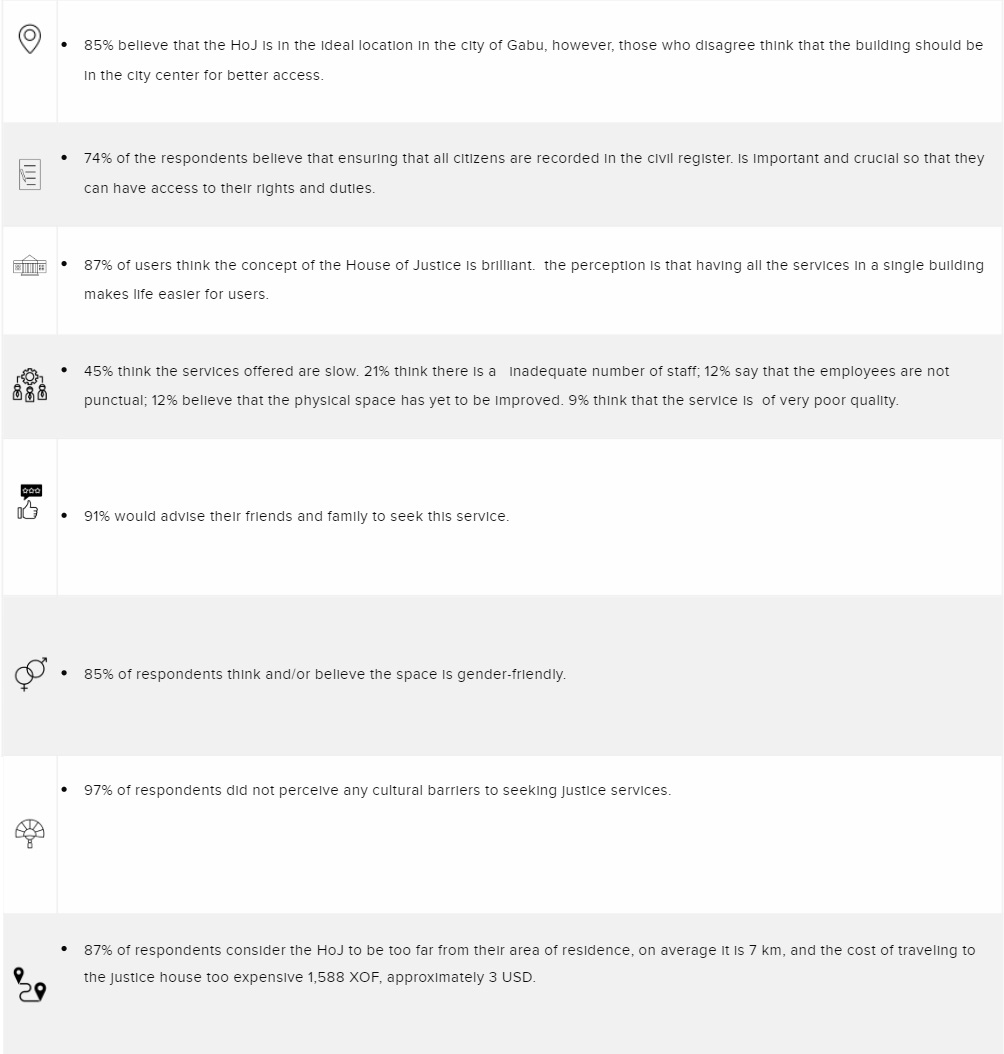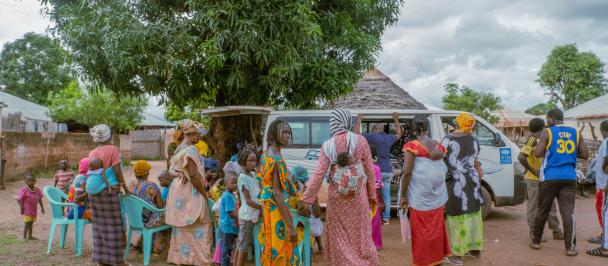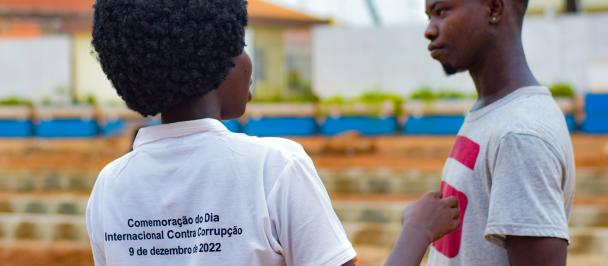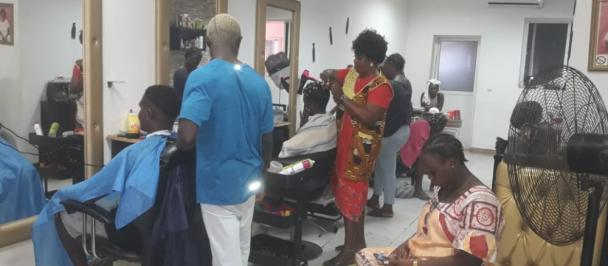The concept of the House of Justice
In Guinea-Bissau the Ministry of Justice’s (MOJ) new strategy on access to justice is piloting the concept of a new model House of Justice (HoJ), which will regroup all services related to justice under the same roof, notably the court, civil status, identification as well as legal aid. This model will be replicated across the country. The model HoJ aims to facilitate access of citizens to all services related to justice in one single house and strengthen the presence of State institutions in the regions. The United Nations Development Programme (UNDP) Guinea-Bissau Office supported the development of the prototype for the HoJ to be constructed in districts throughout the country, starting with the construction of the HoJ in Gabu which was completed in 2019. Three years after the completion of the Gabu HoJ, we are wondering how the building has impacted staff and users? And what learnings we can draw from the Gabu experience, before the next House of Justice is built in the region of Buba?
The House of Justice in the city of Gabu, Guinea Bissau. Photo: Isa da Costa, UNDP Accelerator Lab Guinea Bissau
People in line bringing their own plastic chairs or make use of the property wall due to lack of waiting seats in the House of Justice in Gabu. Photo: Isa da Costa, UNDP Accelerator Lab Guinea Bissau
Why Behavioural Insights?
During 2021, Accelerator Lab Guinea-Bissau worked closely with the Governance Cluster and the Ministry of Justice in order to evaluate the impact of the new House of Justice through a Behavioural Insight study. Behavioural insight is a term increasingly used within public institutions to refer to efforts made to gain accurate and evidence-based understanding of how people behave and make decisions. Planning, designing and implementing policies and programmes on the basis of this deeper understanding can increase their impact (1). The behavioural aspects of the study are the first of their kind in the country and were carried out to measure the effect of the HoJ and the associated behavioural change in users, as well as to observe the functionality of the physical and programmatic aspects of the building. A total of 150 responses were collected using a survey. Similarly, to gather insights on whether the building has generated any impact on staff, 10 Key Informant interviews (2) were carried out with staff from the different justice services provided in the HoJ. Descriptive statistics such as averages, percentages, and outlier analysis changes have been used to analyze the data collected.
Users of the House of Justice in Gabu waiting to be attended in the shade of the veranda. Photo: Isa da Costa, UNDP Accelerator Lab Guinea Bissau
Main findings
The behavioural study revealed that the user’s perception of the building was, in most cases, positive, but the functionality of the spaces, as well as their management, showed room for improvement. Overall, the study made three main findings:
Most of the users of the HoJ in Gabu, reside in urban areas within a 7 km radius of the building; requiring a clear need to reach inhabitants living further than 7 km from HoJ (similar finding in Buba).
Conversely, female users only represent 33% of the users in HoJ Gabu (19% of the users of the justice services in Buba), showing a clear discrepancy and need to improve the access for women. It is important to note that this study did not assess if the phenomenon is linked to the concept of the HoJ or if it is linked to a larger trend of gender inequality in the country.
Those using the HoJ in Gabu have an 88% literacy rate (86% in Buba out of those using the existing justice services), given the context of Guinea-Bissau, these findings show that the part of the population that is illiterate, is not seeking the service.
General user perception of the House of Justice in Gabu
General user perception Buba
Physical limitations of the House of Justice in Gabu
Additionally to the interviews carriead out, the team observed several physical limitations with the building:
Lack of electricity
Lack of running water
Lack of equipment and digitization of processes
Missing house for the generator
Lack of signage and wayfinding
Lack of management
Lack of disability access
Room for improved organization, circulation, and spatial programming
Lack of waste collection points
Lack of trees (natural shadow) in the courtyard
Lack of benches and waiting spaces for users.
Lack of waste collection points has resulted in an environment with trash covering the ground, House of Justice in Gabu. Photo: Isa da Costa, UNDP Accelerator Lab Guinea Bissau
Recommendations
Based on the findings, it is recommended that a HoJ be constructed in Buba, Quinara as planned, accompanied by a mobile unit to reach wider audiences in the hinterland. The construction of a new HoJ should take into consideration a number of actionable recommendations identified:
Physical attributes
In relation to the physical aspects of the building, many respondents recommended a public toilet, more greenery, shadow, and seating spaces for visitors. Public toilets and water were included in the design of the Gabu HoJ, but due to poor maintenance or oversight, they are no longer being used. The improvement of ventilation in the building was also mentioned and the inclusion of signage to facilitate navigation inside the building, in relation to the different services provided. To maintain the building, future users, local community along with the local governments should be included early in the design process to strengthen the sense of belonging. Furthermore, as the building is public, it should be marked similarly to other public buildings, with flags or common markings of the country’s administrative offices.
Gender
Access to justice services for female users is low, only 33% of the users in HoJ were female, it is recommended to carry out an exploration to understand why this is the case.
Collaborations
The question of collaboration between different departments in the HoJ was raised. The staff interviewed at the HoJ in Gabu explained that the lack of maintenance of water and electricity was because they were not delegated tasks, departments would therefore not take ownership of the functions. There is a need to establish a management committee to ensure maintenance and sustainability of the building. A management committee should be made up of members of each of the services provided in the HoJ. For sustainability, the initiative should emanate from the staff, to organize and manage the structure. Additionally, it is recommended that MoJ appoint a coordinator.
Inclusive design and participatory processes
To make a building more inclusive and user-friendly, the design of the building should be prepared and tested from the perspective of future users (especially exposed groups) from its inception. This can be done by inviting the community to give feedback on the plans atvarious stages to ensure that their needs are reflected in the final design. It is important to reflect different user groups eg. children, women, and handicap associations. For instance, to make the existing HoJ accessible to wheelchair users, the entrance and exit are to be improved. The findings also proposed that there is a lack of interaction among users and staff, as there is no platform for user feedback, and among the local community, government and international institutions as the design process was not participatory. Since the importance of participatory processes is still beyond the public discourse, it is necessary to develop guidelines and platforms for collaboration among development partners, local governments, and the local community, in line with national strategies and global agendas.
Psychological effects
In general, the perception of the building is that it is aesthetically pleasing, users feel “pride” and view the building as a landmark structure of the city. The lack of waiting rooms and seating areas is among a few of the problems identified by users, which contribute to the lack of functionality and comfort of the building. Additionally, several users found the building intimidating, as it exudes authority and requires users to respect or present themselves in a formal manner.
Services
Overall, users found that the speed at which the services are provided is slow and needs improvement. Additionally, staff do not seem to respect time and punctuality, as they often arrive late for work. This is a general problem in service provision in the country, and not exclusively linked to the HoJ. Among the recommendations, users envisage an immense potential for the digitization of processes. As human resources do not currently exist in HoJ, it is recommended to explore ways in which HR can be decentralized to also support the regions.
Geographical Location of HoJ
As one of the findings demonstrated that those who use the HoJ live within proximity, it is imperative to have a Mobile Unit to make the services available to those who live furthest from the HoJ in the case of Buba.
UNDP piloting a Mobile Unit in the region of Gabu as as complement to the House of Justice. . Photo: Isa da Costa, UNDP Accelerator Lab Guinea Bissau
Next steps
The behavioural study revealed that the user’s perception of the building was, in most cases, positive, but the functionality of the spaces, as well as their management, showed room for improvement. Overall, the study made three main findings:
Most of the users of the HoJ in Gabu, reside in urban areas within a 7 km radius of the building; requiring a clear need to reach inhabitants living further than 7 km from HoJ (similar finding in Buba).
Conversely, female users only represent 33% of the users in HoJ Gabu (19% of the users of the justice services in Buba), showing a clear discrepancy and need to improve the access for women. It is important to note that this study did not assess if the phenomenon is linked to the concept of the HoJ or if it is linked to a larger trend of gender inequality in the country.
Those using the HoJ in Gabu have an 88% literacy rate (86% in Buba out of those using the existing justice services), given the context of Guinea-Bissau, these findings show that the part of the population that is illiterate, is not seeking the service.
In our next blog we are exploring the possible solution of a mobile unit as a complement to the House of Justice and as a way to bring services closer to the population, read more about our experience with the mobile unit in our follow up blog "“Mobile Justice” as a way of bringing public services closer to the population".
References:
(1) https://www.who.int/our-work/science-division/behavioural-insights
(2) Key Informant Interviews: A useful tool for policy planners | European Entrepreneurship

 Locations
Locations







